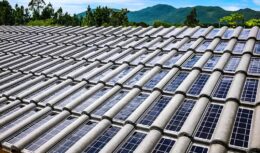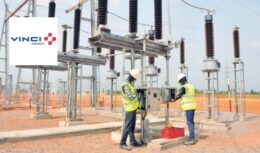
Discover how the taxation of solar energy in 2024 impacts your investment and prepare to make the best decision.
In force since 2023, the Distribution System Usage Fee (TUSD Fio B) or as it became popularly known: taxation of the sun, impacts the photovoltaic solar energy market. The tariff, which applies to distributed generation, can increase electricity bills and reduce the attractiveness of solar energy for some consumers. This article explains the changes in TUSD Fio B, their effects in different scenarios and how to prepare for the new energy scenario, based on data from the Brazilian Photovoltaic Solar Energy Association (ABSOLAR).
Understand how solar taxation works in 2024
To begin with, it is essential to understand the context in which the law 14.300 2022 was raised. Since it was based on this that we had a recent change on January 2024, XNUMX in the energy tariff.
The new Legal framework brought legal security to the photovoltaic solar energy sector, in fact, to the distributed generation sector, but we cannot deny that an impactful change also occurred due to the charging of part of the TUSD Fio B in the energy tariff injected into the concessionaire's electrical network.
To understand Fio b, you first need to understand how the electricity tariff is formed. The tariff is made up of two installments, the first of which is the TE, that is, the energy tariff, which refers to the energy generated and the second installment is what we call TUSD, the tariff for the use of the distribution system, which is relating to the transport of energy to the consumer.
The TE portion of the energy tariff has an energy component, in addition to charges and losses in the electrical system. In the Tusd portion, there are charges, losses and the much talked about A wire, which represents an average of 6% of the total tariff.
The B wire, which represents the amount charged for transporting energy in the distribution network, has an average weight of 28% of the energy tariff.
What were the changes generated by the new taxation of solar energy ?
In addition to the details mentioned above, it is also necessary to know that the solar taxation law determined that all distributed generation projects filed after January 7, 2023 will be classified as GD2 and GD3.
In practice, this means that solar energy projects classified as GD2 pay for the transport of energy injected into the distribution network, represented in the energy tariff as wire b and will be discounted increasingly over the years.
This discount works as follows: a 2023% charge for Fio B started in 15, now, in 2024 this percentage increased to 30%. In 2025, 45% will be charged, 2026 60% and so on. So the change in solar taxation in 2024 was an increase of another 15% in the charge for Fio B, going from 15% to 30%.
Example of how the new taxation will work
To make it easier to understand the impact of this change on solar energy installations, we have provided a small example. Knowing that wire B has an average weight of 28% on the energy tariff throughout Brazil, the 30% discount placed by the solar tax in 2024 on Wire B will cause a devaluation of 8.4% on energy injected into the electrical grid .
In this way, considering that the value of the kWh hypothetically costs R$ 1, for example, in 2023 it was possible to deduct only 95 cents from energy surpluses, that is, a payment for wire B of approximately 4 cents. In 2024, for every R$1 charged per kWh consumed, it is possible to deduct 91 cents from surplus solar energy, paying approximately 8 cents for each kWh deducted.
Suppose that your utility's kWh costs R$1, also consider that your monthly consumption is 1.800 kWh per month and your solar energy system injects 2.000 kWh of excess electricity into the grid. In this way, 1.800 kW of these surplus energy will be used to reduce consumption.
This will result in a charge of R$1.800 on your energy bill. Then you will use 1800 kW of the surplus injected energy, multiplied by the energy tariff with the Fio B discount, which is 91 cents. This results in a balance of R$1.648,8 to compensate for the amount consumed, in this case you will pay R$151,20 to the dealership.










